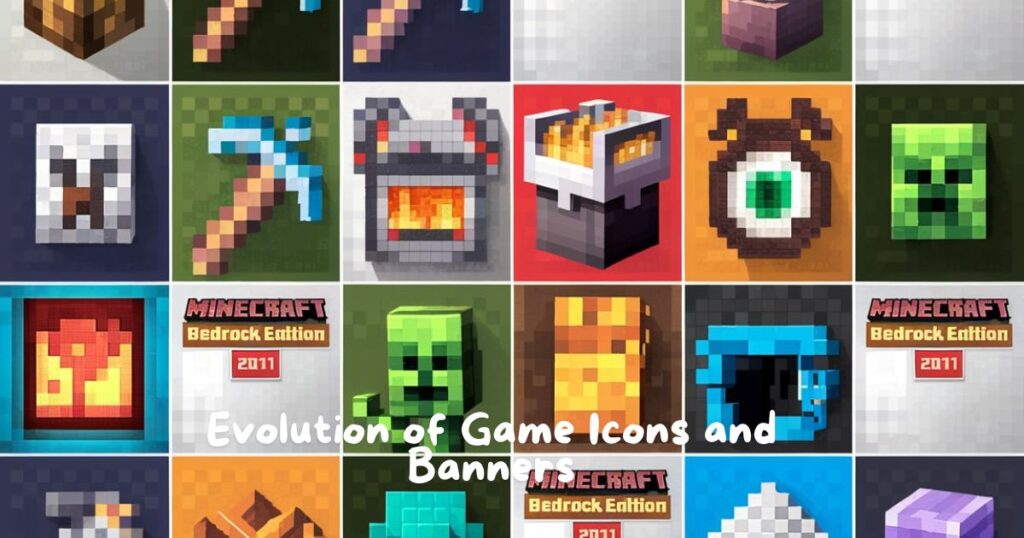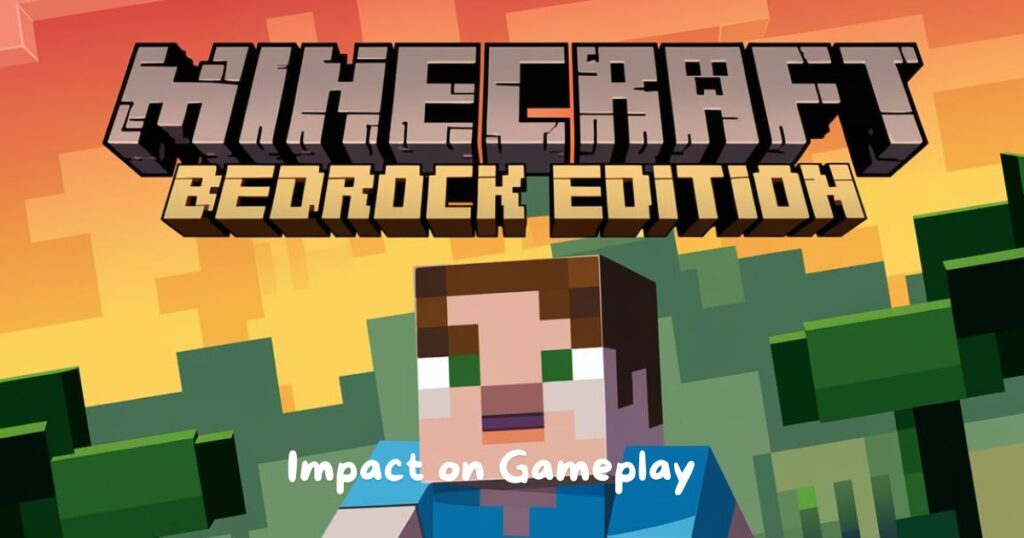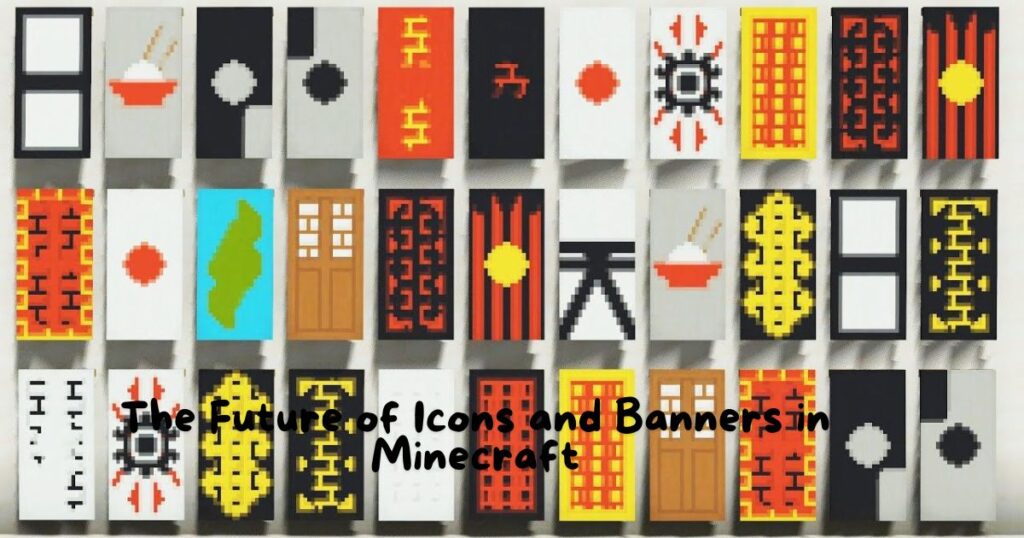Minecraft: Bedrock Edition, launched in 2011, has become a cornerstone of the gaming world, captivating players with its endless possibilities for creativity and exploration.
Among the many elements that contribute to its charm, the game icons and banners stand out as vital components that enhance both aesthetics and gameplay.
This article delves into the fascinating journey of Minecraft: Bedrock Edition (2011) game icons and banners, exploring their evolution, impact, and future potential.
Overview of Minecraft: Bedrock Edition (2011)
Minecraft: Bedrock Edition burst onto the scene in 2011, revolutionizing the gaming industry with its cross-platform functionality.
Unlike its Java counterpart, Bedrock Edition allows players on Windows 10, Xbox, PlayStation, Nintendo Switch, iOS, and Android to connect and collaborate seamlessly.
This unprecedented level of accessibility has been a game-changer, fostering a diverse and expansive gaming community.
The Bedrock Edition introduced several unique features that set it apart:
- Marketplace: A hub for purchasing skins, texture packs, and worlds
- Realms: Private multiplayer servers for a more controlled gaming experience
- Enhanced Performance: Optimized for smooth gameplay across various devices
These innovations, combined with regular updates, have ensured that Minecraft: Bedrock Edition remains at the forefront of gaming trends, continually engaging its ever-growing player base.
One of the key strengths of Bedrock Edition is its consistency across platforms. Whether you’re playing on a high-end gaming PC or a mobile device, the core experience remains the same.
This uniformity extends to the visual elements, including game icons and banners, which play a crucial role in maintaining a cohesive aesthetic across all platforms.
Evolution of Game Icons and Banners

Early Years (2011-2015)
In the nascent stages of Minecraft: Bedrock Edition, the iconic grass block served as the primary game icon.
This simple yet effective design quickly became synonymous with the Minecraft brand, representing the game’s core concept of building and exploration.
During this period, banners were introduced as functional elements, primarily used to mark territories or signal specific gameplay features.
The early banner designs were straightforward, focusing more on utility than aesthetic appeal. However, these simple beginnings laid the foundation for what would become a complex system of visual communication within the game.
“The grass block icon was like a beacon for Minecraft players. It was simple, recognizable, and perfectly encapsulated what the game was all about.” – Early Minecraft player
During this period, the customization options for banners were limited. Players could choose from a small selection of basic colors and patterns, but the emphasis was on functionality rather than intricate design.
Despite these limitations, creative players found ways to use these basic tools to create distinctive markers for their in-game creations.
Expansion Phase (2016-2018)
As Minecraft’s popularity soared between 2016 and 2018, the complexity and variety of its visual elements grew exponentially. This period saw the introduction of thematic banners that reflected new game updates. For instance:
- The 2016 aquatic update brought banners featuring underwater motifs
- The 2017 Nether update introduced darker, more intense designs
Icons also evolved during this phase, incorporating more detailed designs. The Creeper, one of Minecraft’s most recognizable characters, began appearing in icons, adding a layer of familiarity and charm to the game’s visual identity.
This expansion phase coincided with significant growth in the Minecraft community. As more players joined, the demand for personalization and unique identifiers increased. The development team responded by introducing new crafting recipes for banners, allowing for more complex designs and color combinations.
Case Study:
The Impact of the Aquatic Update The 2016 Aquatic Update was a turning point for banner design in Minecraft: Bedrock Edition. It introduced new patterns like waves, fish, and coral, allowing players to create ocean-themed banners.
This update not only enhanced the visual appeal of underwater builds but also sparked a wave of creativity in the community, with players sharing their aquatic banner designs on forums and social media.
Modern Trends (2019-Present)
In recent years, Minecraft: Bedrock Edition has continued to innovate with its game icons and banners.
The integration of community-driven content has allowed players to see their creations reflected in the game’s official banners, fostering a sense of ownership and engagement.
Modern banners often feature:
- Complex designs with multiple layers
- Animated elements that add dynamism to the game’s visual landscape
- High-resolution graphics that showcase intricate details
These advancements have transformed banners from simple markers into works of art that enhance the overall gaming experience.
The introduction of the loom in 2019 was a game-changer for banner creation. This dedicated crafting station made it easier for players to design complex banners, offering a user-friendly interface for layering patterns and colors.
Read this Post: Wallpaper:znvmimg_hwe= Stitch: Elevate Your Home with Textured Elegance
Crafting and Customizing Banners
Basic Banner Crafting
Crafting banners in Minecraft: Bedrock Edition is a straightforward process that opens up a world of creative possibilities. Here’s a basic recipe:
| Materials Needed | Quantity |
| Wool Blocks | 6 |
| Stick | 1 |
Steps:
- Open the crafting table
- Place the wool blocks in the top two rows
- Put the stick in the center of the bottom row
- Collect your newly crafted banner
This simple process creates a blank canvas for further customization, accessible to players of all skill levels.
Advanced Customization
For those looking to elevate their banner designs, Minecraft offers a range of advanced customization options.
Players can use dyes to add up to six layers of patterns to a single banner, creating intricate designs that include everything from national flags to personal emblems.
Popular Advanced Techniques:
- Gradient effects using multiple dye colors
- Combining geometric patterns for complex designs
- Recreating real-world logos or symbols
The loom, introduced in later updates, has become an invaluable tool for banner customization.
It allows players to preview and select patterns before applying them, streamlining the design process.
Advanced Banner Patterns:
- Bordure Indented
- Field Masoned
- Gradient
- Flower Charge
- Mojang Logo
These patterns, when combined creatively, allow for an almost infinite variety of designs. Players have created everything from intricate medieval heraldry to modern corporate logos using these tools.
Displaying Banners
Once crafted and customized, banners can be displayed in various ways within the game. Players often use banners to:
- Decorate bases and structures
- Mark important locations in multiplayer worlds
- Create artistic installations
Interestingly, banners can also be attached to shields, allowing players to carry their designs into battle. This feature adds a layer of personalization to combat, enabling players to represent their team or faction while defending their territory.
The versatility of banner placement has led to some creative uses in the Minecraft community. For example, some players use banners to create makeshift billboards for in-game advertisements or to display rules in multiplayer servers.
Others have used cleverly placed banners to create the illusion of curtains or tapestries in their builds, adding depth and texture to their creations.
Impact on Gameplay

Enhancing Visual Appeal
Game icons and banners significantly enhance Minecraft’s visual appeal, making the game world more engaging and immersive.
Icons provide clear visual cues, helping players navigate the game’s menus and interfaces, while banners add a layer of personalization to in-game environments.
Case Study: The Nether Update When the Nether Update was released, new banner designs featuring fiery motifs and deep crimson hues were introduced.
These banners allowed players to transform their Nether fortresses and bases, creating a cohesive and thematic aesthetic that enhanced the overall experience of exploring this dangerous dimension.
The impact of these visual elements goes beyond mere decoration. They help create a sense of place and identity within the game world.
A well-designed banner can turn a simple structure into a recognizable landmark, helping players navigate and remember locations in vast Minecraft worlds.
Facilitating Player Interaction
In multiplayer settings, banners are crucial in facilitating player interaction and coordination. By designing and displaying banners, players can quickly identify team bases, mark essential locations, and communicate with other players without the need for text or voice chat.
Examples of Banner Communication:
- A red banner with a sword pattern might indicate a PvP arena
- A green banner with a tree pattern could mark a community farm
- A blue banner with wave patterns might signal a portal to an ocean biome
This visual communication is especially valuable in large multiplayer servers, where clear indicators can help prevent confusion and enhance the overall gameplay experience.
In some multiplayer communities, banner designs have evolved into a form of non-verbal language.
Players can convey complex messages or instructions through carefully designed banner combinations, creating a unique form of in-game communication that transcends language barriers.
Community Engagement
Banners and icons play a significant role in fostering community engagement within the Minecraft ecosystem.
Many players share their banner designs with the broader Minecraft community, participating in design challenges or contributing to collaborative projects.
“Banners have become a language of their own in Minecraft. They’re not just decorations; they’re a way for players to express themselves and connect with others.” – Minecraft Community Manager
This sharing of ideas and creativity helps to strengthen the bonds between players, turning Minecraft into more than just a game; it becomes a platform for artistic expression and social interaction.
The community aspect of banner design has led to the creation of online galleries and databases where players can share and download banner designs.
These resources have become valuable for players looking for inspiration or specific designs for their projects, further enhancing the collaborative nature of the Minecraft community.
Best Practices for Designing Icons and Banners
Creative Techniques
When designing icons and banners, it’s essential to experiment with different colors, patterns, and layering techniques. Here are some tips for creating standout designs:
- Use contrasting colors to make your designs pop
- Experiment with symmetry and asymmetry for different effects
- Incorporate meaningful symbols that resonate with your gameplay style
- Keep it simple – sometimes less is more in banner design
Remember, the goal is to create designs that are both visually appealing and functional within the game world.
One advanced technique that has gained popularity is the use of optical illusions in banner design.
By cleverly arranging patterns and colors, some players have created banners that appear to be three-dimensional or animated when viewed from different angles.
Collaborative Design
Collaboration is key to creating cohesive and impactful designs, especially in multiplayer settings.
Working with friends or team members to develop a unified aesthetic for your icons and banners can result in more impressive and functional designs.
Collaborative Design Process:
- Brainstorm ideas as a group
- Assign different elements to team members based on their strengths
- Create prototypes and share for feedback
- Refine designs based on group input
- Implement the final designs in-game
This process not only results in better designs but also strengthens team bonds and enhances the overall multiplayer experience.
Some multiplayer servers have taken collaborative design to the next level by hosting banner design competitions.
These events bring the community together, showcasing creativity and often resulting in new official server banners or icons.
Staying Updated with Trends
To keep your banner and icon designs fresh and relevant, it’s crucial to stay updated with the latest trends in the Minecraft community. Here are some ways to stay informed:
- Follow official Minecraft social media accounts for update news
- Participate in community forums and discussion boards
- Attend virtual Minecraft events and conventions
- Experiment with new design tools and techniques as they’re released
By staying current, you’ll be able to incorporate the latest features and design elements into your creations, keeping your Minecraft world dynamic and engaging.
It’s also worth noting that banner trends often reflect broader cultural and artistic movements.
For example, minimalist designs gained popularity in the Minecraft community around the same time they were trending in real-world graphic design.
The Future of Icons and Banners in Minecraft

Anticipated Trends
As Minecraft continues to evolve, we can expect to see exciting developments in the realm of game icons and banners. Some anticipated trends include:
- Dynamic banners that change appearance based on in-game events or time of day
- Interactive icons that respond to player actions or provide additional information when hovered over
- Increased cultural representation in banner designs, reflecting Minecraft’s global player base
These advancements will likely make icons and banners even more integral to the Minecraft experience, enhancing both aesthetics and functionality.
There’s also speculation about the potential for sound-reactive banners, which could change their appearance in response to in-game music or ambient sounds.
This could add a new dimension to the visual experience, especially in music-themed builds or event spaces.
Potential for Innovation
The future of Minecraft: Bedrock Edition game icons and banners is ripe with potential for innovation. Some exciting possibilities include:
- AR integration: Using augmented reality to project Minecraft banners into the real world
- VR design tools: Creating and viewing banners in immersive virtual reality environments
- AI-assisted design: Implementing artificial intelligence to help players create complex banner patterns
These innovations could revolutionize how players interact with and create visual elements in Minecraft, opening up new avenues for creativity and expression.
The potential for AI in banner design is particularly intriguing. Machine learning algorithms could analyze existing banner designs to generate new, unique patterns or even create banners that adapt to a player’s building style over time.
Summary of the Role of Icons and Banners
Minecraft: Bedrock Edition (2011) game icons and banners have evolved from simple markers to complex design elements that play a crucial role in shaping the player experience.
They enhance visual appeal, facilitate communication, and foster community engagement, reflecting Minecraft’s growth from a simple building game to a complex, multi-faceted platform for creativity and social interaction.
The journey of these visual elements mirrors the evolution of Minecraft itself. From humble beginnings as basic markers, they have grown into a sophisticated system of visual communication and expression, integral to the game’s identity and player experience.
Final Thoughts
As Minecraft: Bedrock Edition continues to grow and evolve, the importance of game icons and banners will only increase.
These visual elements are more than just decorative; they’re a fundamental part of the Minecraft language, allowing players to express themselves, communicate with others, and leave their mark on the virtual world. The future of Minecraft icons and banners is bright, with endless possibilities for innovation and creativity.
As we look ahead to upcoming updates and advancements in gaming technology, one thing is certain: the Minecraft community will continue to push the boundaries of what’s possible, creating ever more impressive and meaningful designs that enhance the game for players around the world.
Whether you’re a seasoned Minecraft veteran or a newcomer to the world of blocks and crafting, take some time to explore the rich possibilities offered by game icons and banners. Who knows? Your next banner design could become the next big trend in the vast and vibrant world of Minecraft: Bedrock Edition.

Hello, I’m Matthew, an author at GenRealRedar, where I explore the dynamic worlds of Lifestyle, Tech, Gaming, and Travel. My articles are designed to offer insightful and engaging content, breaking down complex topics into easily digestible reads for a broad audience. Stay tuned on GenRealRedar.com for fresh perspectives and the latest updates on all things tech, lifestyle, and beyond.
